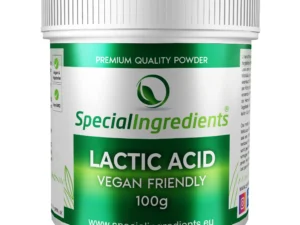Description
Ethylene Glycol: A Silent Danger Hiding in Plain Sight
Ethylene glycol, a seemingly innocuous chemical, is more than just a component of antifreeze. It’s a versatile industrial compound with a wide range of applications, but its extreme toxicity presents a serious threat to both human and animal health. Understanding the properties, uses, and dangers of ethylene glycol is crucial for preventing accidental or intentional poisoning.
What is Ethylene Glycol?
Ethylene glycol is a colorless, odorless, syrupy liquid with a sweet taste. This deceptive sweetness is part of the problem, as it can inadvertently attract both children and animals. Chemically, it’s a simple dialcohol, meaning it has two alcohol (-OH) groups attached to an ethane molecule.
Common Uses of Ethylene Glycol:
Despite its toxicity, ethylene glycol plays a vital role in various industries:
- Antifreeze and Coolant: This is its most well-known application. Its ability to lower the freezing point of water and raise its boiling point makes it an ideal component in antifreeze used in car radiators and cooling systems.
- Production of Polymers: Ethylene glycol is a key ingredient in the manufacturing of polyester fibers for clothing, upholstery, and plastic bottles.
- De-icing Agent: It’s used as a de-icer for airplanes and runways, helping to prevent ice formation in cold weather conditions.
- Solvent: It can act as a solvent in some paints, inks, and cleaning products.
- Hydrate Inhibition: In the oil and gas industry, ethylene glycol is used to prevent the formation of hydrates in pipelines, which can cause blockages and disrupt operations.
The Dangers of Ethylene Glycol Poisoning:
The real danger lies in ethylene glycol’s high toxicity. Ingestion, even in small amounts, can lead to severe health consequences and even death. The body metabolizes ethylene glycol into toxic byproducts, including glycolic acid and oxalic acid, which are responsible for the damaging effects.
The Stages of Ethylene Glycol Poisoning:
Ethylene glycol poisoning typically progresses through distinct stages:
- Stage 1 (0.5-12 hours post-ingestion): Symptoms resemble alcohol intoxication, including slurred speech, nausea, vomiting, and impaired coordination.
- Stage 2 (12-24 hours post-ingestion): The toxic byproducts accumulate, leading to significant metabolic acidosis (increased acidity in the blood). This can manifest as rapid heartbeat, rapid breathing, and potentially lung damage.
- Stage 3 (24-72 hours post-ingestion): Kidney failure is a major concern as the oxalic acid forms calcium oxalate crystals, which deposit in the kidneys and cause irreversible damage. Neurological problems like seizures and coma can also occur.
Who is at Risk?
- Children: Attracted to the sweet taste, children are particularly vulnerable to accidental ingestion.
- Pets: Antifreeze spills pose a significant risk to pets, especially dogs and cats, who may lick it up.
- Individuals Seeking Intentional Harm: Sadly, ethylene glycol has been used in cases of suicide or homicide.
- Workers in Industries Using Ethylene Glycol: Proper handling and safety protocols are vital to protect workers from exposure.
Prevention and Treatment:
Prevention is key to avoiding ethylene glycol poisoning:
- Safe Storage: Store ethylene glycol in clearly labeled, tightly sealed containers, out of reach of children and pets.
- Clean Up Spills Immediately: Promptly clean up any spills to prevent accidental ingestion.
- Dispose Responsibly: Dispose of used antifreeze properly at designated recycling centers to avoid environmental contamination.
- Educate Children: Teach children about the dangers of ingesting unknown substances.
- Monitor Pets: Keep a close eye on pets when around vehicles or potential sources of ethylene glycol.
Treatment:
If ethylene glycol ingestion is suspected, immediate medical attention is crucial. Treatment typically involves:
- Gastric Lavage: To remove any unabsorbed ethylene glycol from the stomach, if administered soon after ingestion.
- Administration of Antidotes: Fomepizole (Antizol) or ethanol can competitively inhibit the enzyme that metabolizes ethylene glycol, reducing the formation of toxic byproducts.
- Hemodialysis: To remove ethylene glycol and its metabolites from the bloodstream.
- Supportive Care: Addressing symptoms and supporting vital organ functions.
Conclusion:
Ethylene glycol’s widespread use makes it a ubiquitous, yet potentially deadly, substance. By understanding its properties, uses, and risks, and by practicing responsible handling and storage, we can significantly reduce the incidence of poisoning and protect ourselves, our families, and our pets. Stay vigilant and spread awareness to prevent future tragedies.




















Reviews
There are no reviews yet.